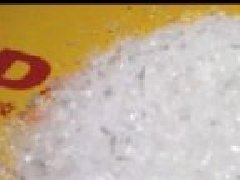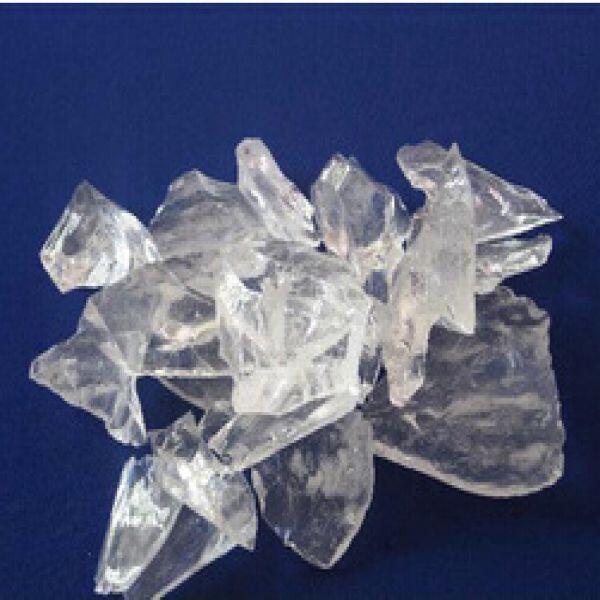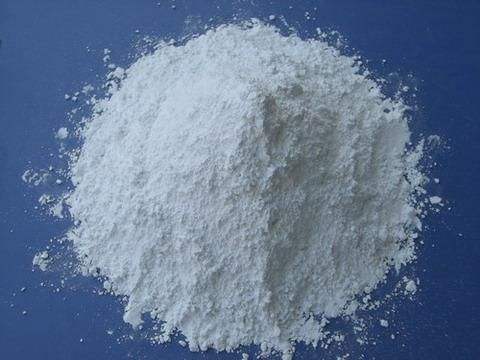Fused quartz block
Fused silica is Fused silica, an amorphous (glassy) form of silicon oxide (quartz, silica). It is a typical glass with a long-range disordered atomic structure. It provides its high service temperature and low coefficient of thermal expansion through a three-dimensional structure cross-linking.
Performance characteristics
Fused quartz material in the use of investment casting shell on foreign developed countries such as the use of the United States and the use of Japan continues to increase year by year, especially in the silica sol shell surface layer has a very experienced effect, in the use of zircon material and price has made a great breakthrough, is currently a more ideal engineering application material.
Fused quartz is made by melting natural high-purity silica in an electric furnace at a temperature above 1760 ° C and then rapidly cooling. This process converts crystalline silica into amorphous glass melt.
The melting temperature of fused quartz is about 1713℃, the thermal conductivity is low, and the coefficient of thermal expansion is almost the smallest among all refractory materials, so it has very high thermal shock stability. Therefore, in the process of roasting and pouring, the fused quartz shell is rarely broken due to temperature upheaval, and is an ideal refractory for investment casting, which can be used as a refractory for the surface or back coating, and a sanding material.
Fused quartz will partially or fully improve the shell properties. The small thermal expansion coefficient of fused quartz is conducive to preventing the shell from cracking and deformation in the process of dewaxing and roasting, and is conducive to ensuring the dimensional stability of the casting. The fused quartz has high purity and good stability of the coating. The high temperature creep resistance of the shell is improved.
Fused quartz at low temperature has poor thermal conductivity, small heat capacity, only half of zirconium sand, and poor wettability of most metal liquids to it, which makes it easy to produce a gap between the metal solidification layer and the inner surface of the shell, and further reduce the thermal conductivity, which is conducive to the filling of thin wall castings. At high temperature, fused quartz has high transparency and can heat transfer by radiation, making its thermal conductivity exceed that of aluminum silicate shells. The casting cooling faster, easier to obtain sound casting.
When the casting is cooled, the cristobalite changes from the high-temperature type to the low-temperature type, and the volume changes sharply, which makes the shell appear numerous cracks and the strength drops sharply, which is conducive to the husking. Fused quartz is acidic and can be removed by alkali boiling, alkali blasting and other chemical sand cleaning methods.
Operation technology
(A) This operation process is suitable for silica sol, shell surface layer or transition layer.
(2) The silica sol used in this process is 30% silicon dioxide with zircon powder coating.
(3) Wetting agent, defoamer and zircon powder coating in the process operation.
(4) The flow cup viscometer used in this operation is a Zahn 5# cup, and the outlet aperture is Φ5.28mm.
(5) Coating preparation:
1, the preparation of molten quartz powder, 320 mesh (net number: 0.044) 275 mesh (net number: 0.052) 200 mesh (net number: 0.076) 120 mesh (net number: 0.125) molten quartz powder SiO2 mass fraction of more than 99.5%. Among them, 320 mesh accounts for 50%, 200 mesh accounts for 25%, 120 mesh accounts for 25%, and the percentage is calculated as the mass fraction, that is, the weight ratio.
2, the viscosity of the coating is 50 to 60 seconds, strictly controlled not less than 50 seconds, 60 seconds is the better viscosity. It can obtain better surface finish of castings; For the production of carbon steel or 430 series, the viscosity can be reduced to 40 seconds.
(6) Hanging sand:
1, with molten quartz sand 80~100 mesh (50~100 mesh) 50%, with corundum sand 80 mesh, 50%.
2, with molten quartz sand 80~100 mesh (50~100 mesh), (50~100 mesh)
3, with corundum sand 80 mesh.
The above three kinds of hanging sand can be used, but according to the different castings, combined with the surface quality of the production site maneuvering operation. (7) Precautions:
1, the coating preparation strictly control the proportion, shall not be arbitrary, strict on-site operation tracking. The viscosity measurement of the flow cup must be accurate, and the viscosity must be measured before each coating.
2, need to do two layers of surface layer, the second time is the transition layer, the paint viscosity is 28~36 seconds.
3, surface shell technology is a serious and meticulous operation technology, to ensure that the coating thickness is uniform, otherwise it will produce permeability or pitted casting. The gravity of hanging sand is relatively uniform and uniform, covering all aspects.
4. The thickness of the surface layer in the case of molten quartz wet film under different viscosity is: the viscosity of 50 seconds is 0.2mm, the viscosity of 40 seconds is 0.18mm, the viscosity of 30 seconds is 0.15mm, and the viscosity of 20 seconds is 0.12mm.
5, molten quartz sand: 50~100 mesh is 0.325~0.15 of the standard network number, and the screen size is 0.3~0.15mm of ASTME11-70.
6. The hanging sand of the second layer can be consistent with the operation of the original zircon powder surface layer process, and the molten quartz sand of 30 to 50 mesh (screen size 0.6 to 0.3mm) can also be used.
Merits and demerits
advantage
(1) The price of fused quartz is cheaper than that of zircon, and the density is much lower than that of zircon. Therefore, replacing zircon with fused quartz can reduce the cost of making shells.
(2) The fused quartz raw materials are selected, then remelted by arc, and removed from the cristobalite, so less impurities and high purity. So the stability of the slurry has never been a problem. Practice has proved that the stability of fused quartz-silica sol coating can usually be more than 1 year.
(3) High temperature crystallization, low temperature phase change, so that the surface of the casting is easy to clean.
shortcoming
(1) The narrow particle size distribution range of the powder, coupled with the small density, is not conducive to the flow of paint, dripping; Because of the high transparency of fused quartz slurry, it is difficult for operators to identify the thickness and uniformity of the coating.
(2) As a surface layer of sand, the shape of molten quartz sand is polygonal, coupled with a small density, easy to bridge, forming floating sand.
ceramic
Fused quartz ceramics, also known as quartz glass ceramics or fused quartz sintered materials, also known as quartz ceramics, it is based on fused quartz block or quartz glass as raw materials, through grinding, forming and firing processes and made of a sintered body. Fused quartz ceramics were successfully developed by the United States in the early 20th century and industrialized production in l963, it not only has many excellent properties of quartz glass, such as small coefficient of thermal expansion, good thermal stability, good electrical insulation, good chemical erosion resistance, but also has some properties that quartz glass products lack. Such as quartz glass products due to good thermal conductivity, once the use of the loss of permeability (crystallization) is damaged and scrapped, and quartz ceramic products due to poor thermal conductivity, in the use of the process even if the surface crystallization, its internal crystallization is very slow, the product can continue to use. A greater advantage of quartz ceramics is that its strength increases greatly with the increase in temperature below 1100, and its strength can increase by 33% from room temperature to 1100 degrees Celsius.
Because it has many of the above excellent properties, since its advent, it has been rapidly promoted and applied in the United States, Japan, the former Soviet Union, France and other industrial development, and its application fields also involve spacecraft, rockets, missiles, radar, atomic energy, electronics, steel, coking, non-ferrous metals, glass and other industrial fields, is a very promising new material. Because the fused quartz ceramics have the above excellent properties and a wide range of uses, both at home and abroad are invested in the research and development of fused quartz ceramics. At present, the United States, France, Germany, Japan and other fused quartz ceramics in the production and application of the level. It is mainly used as a refractory material and a structural material that can resist temperature upheaval at medium temperature. According to the different conditions of use, the developed quartz ceramic products have different performance characteristics, not only high density, high strength series products, but also low density, high porosity thermal insulation products and foam quartz products. Foreign products generally have high density, strength and uniformity




 <
<
 <
<

 Customer Service 1
Customer Service 1